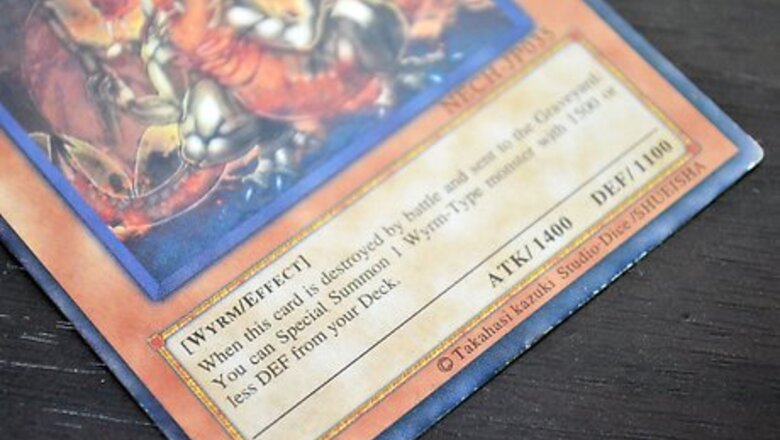
views
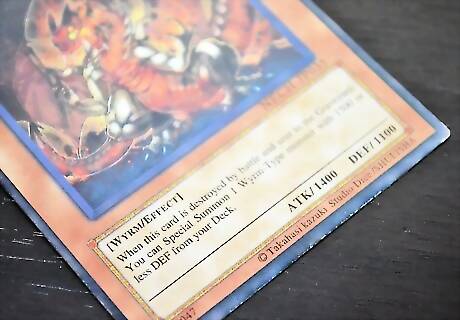
Look at the bottom right part of the card. If it says Copyright to the left of the shiny square then the card is fake.

Look on the bottom right hand corner on the back there should be a ™ sign. If that is blurred then the card is fake.
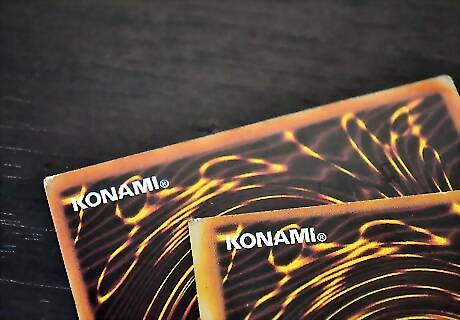
Inspect the back of the card. On the back next to the Konami sign there should be a small ®, if this is blurred then the card is fake.
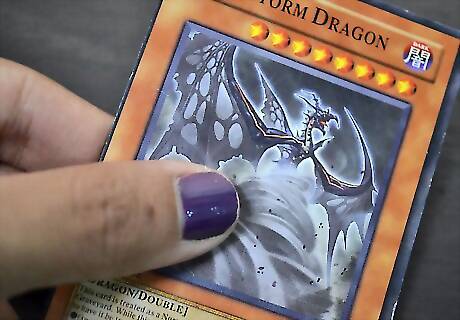
Feel the card, if it feels waxy it's probably fake.
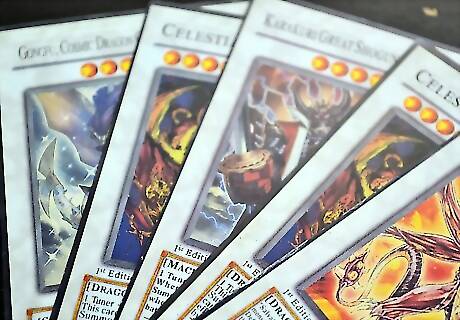
Examine the cards for any giveaways -- (they may say they are fake right on them).
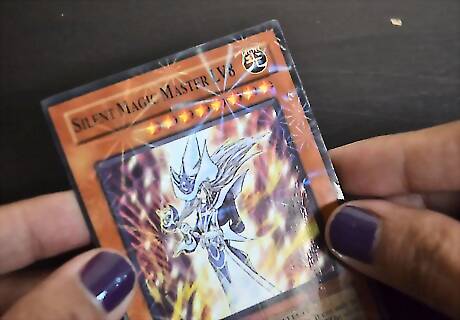
Some cards might have a shiny coat that makes a kind of sparkle and can only be removed if you rip the card. If this feature is on a card, it will always be a fake. (EDIT: This is not actually always the case. There are card rarities known as Parallel Rare. They feature this coating over the entire card. The sparkles can be rubbed off with excess handling, but the film will remain. Many fakes do in fact employ this effect to make a card appear rare, however, the only real cards that have this feature are certain video game promo cards, so if you encounter something that is supposed to be out of a pack, or is any other way represented as not one of those promos, then it will be fake. Use all of these steps together when evaluating a card, as this step alone is not guaranteed to weed out all fakes, and may weed out some real cards.)
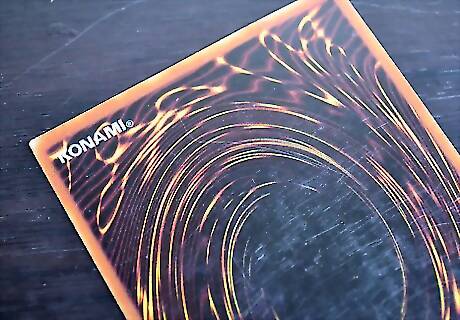
Look for the Konami logo on the back at the top-left, and the Yu-Gi-Oh! logo at the bottom-right. If it doesn't have this it means they are fake.

Check out the color. If it is not solid or is slightly faded, they are most likely fake. Also, the backs shouldn't be different colors unless they are god cards; Obelisk is blue, Ra is yellow, and Slifer is red.
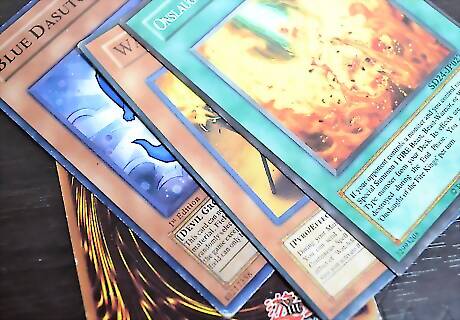
Call trade backs to ensure that if you are ripped off you can get your money or cards back from the trade if you are trading with friends. If the card has a different name than the original cards then it is most likely a fake card

There will be a small silver or gold square (hologram) in the bottom right corner with portions of the word Yu-Gi-Oh! in it. Silver squares represent unlimited edition, and gold represents 1st edition//limited edition. Below the lower left-hand corner of the card image and the upper left-hand corner of the card lore area, if it says 1st edition or limited edition, then it should have a gold hologram in the lower right-hand corner of the card. If there is no writing in that area, then it will have the silver hologram. Note: Look closely at this hologram, as it should have Yu-Gi-Oh! in it as well as an eye of Anubis sign. If it is just a reflective piece of silver or gold, then it is fake. Be sure to look at it from different angles, as sometimes those little images aren't visible from one or more angles, depending on the lighting. If the box is not there or is not exactly in the corner it is fake. Note: It is possible that, as a production defect, the printing press was misaligned and the hologram could be askew, or even partially off the edge of the card. Also, the hologram may be the wrong color (silver instead of gold, or vice versa). However, this is very rare, so follow this step closely in conjunction with the others. If the card is real but has one of these defects, it is not a misprint but a manufacturing defect, and adds no value to the card, other than to an avid collector, so do not let someone talk you into an uneven trade based on a claim that it is worth a lot.
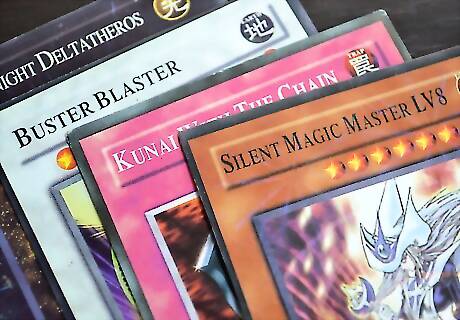
Look at the font. If it doesn't look exactly the same it is fake. If it's shiny look at the shiny parts, see if the shiny part is circles everywhere then it's a fake. (EDIT: The card rarity Prismatic Secret Rare does in fact have the dots in the holofoil for the writing. However, this is also coupled with a special perpendicular holofoil effect. Normally, the lines in the image of a secret rare are diagonal and parallel, and the card name is printed in silver writing. However, in Prismatic secret rare, the lines in the image are straight up and down and left to right, making an effect that looks like boxes, or plaid. However, this effect is only present on certain video game promo cards. The newer video games have normal super rare cards, rather than this prismatic secret rare, so any card with that effect is going to be old. You may want to look on yugioh.wikia for a list of some of the video game promo cards that have been released in this rarity, because this is also a technique scammers use to make fake cards look real.)

If the images appear washed or blurry it is possibly a fake. In newer packs there is a rarity known as ghost rare. You should google an image of such a card, to see what they look like. Their pictures are almost completely without color, or have only two colors and are very washed out. These are very rare and very valuable, but that also makes them a target for scammers trying to trade fakes. Generally if a card has an odd image, it is fake. Sometimes the words will not be grammatically correct, this is a dead give away.
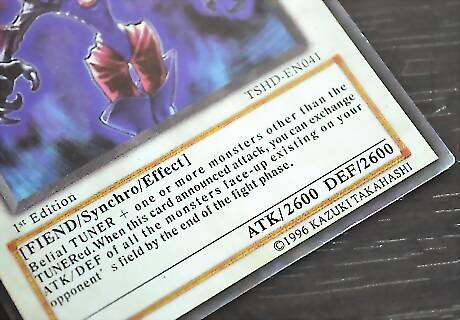
Make sure there is Kazuki Takahashi's name printed on the card. If it doesn't have this it is most likely a fake. Remember though some cards may not have this so check with guides online.
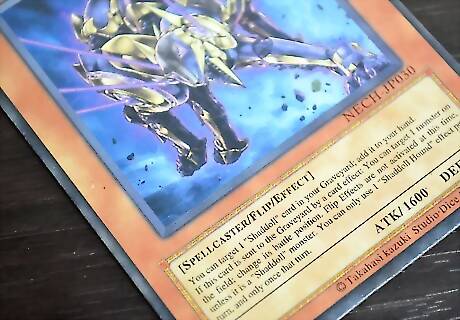
Read the description carefully. If there is any strange wording or misspelled words, or the font is different from a normal card, it is a fake.
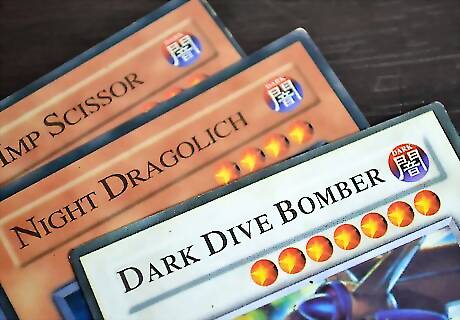
There is also a Japanese character to represent the Attribute in the top right hand corner. If it is not there it is most likely fake.

One of the most common fake cards you will see is Exodia. There are a lot of fakes of Exodia on the market because newbie players don't know any better, and are likely to buy or trade for them, thinking they are getting a good card. "Exodia the Forbidden One" features only the head of Exodia, and part of his shoulders, and has 1000 Atk/Def. Then, each of his limbs is a separate card, making a total of five cards to a set. Any "Exodia the forbidden one" or just "exodia" that has a picture of the entire assembled Exodia is fake. If it is coming out of the frame of the image area, it is fake. Often, these will have Atk/Def listed as infinity, or other insanely large numbers. There are cards, like exodius the ultimate forbidden lord and exodia necros that look similar to exodia, but they are very different. Educate yourself on Exodia and its similar partner cards, so that you don't fall victim to this common trick.
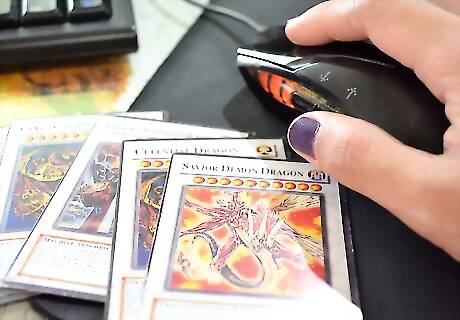
If the card doesn't have any of these things but you still aren't sure if it's real search the name of the card on websites that make fake cards.













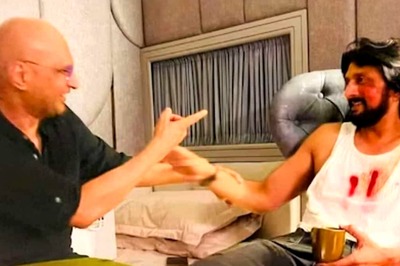


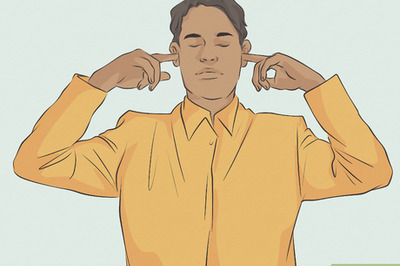
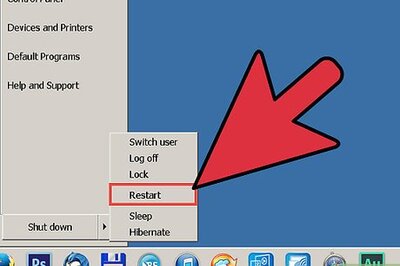
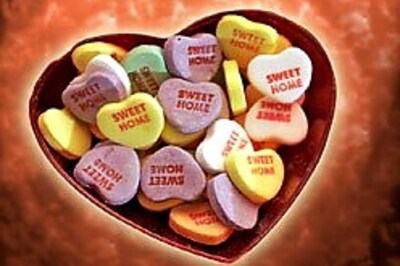
Comments
0 comment